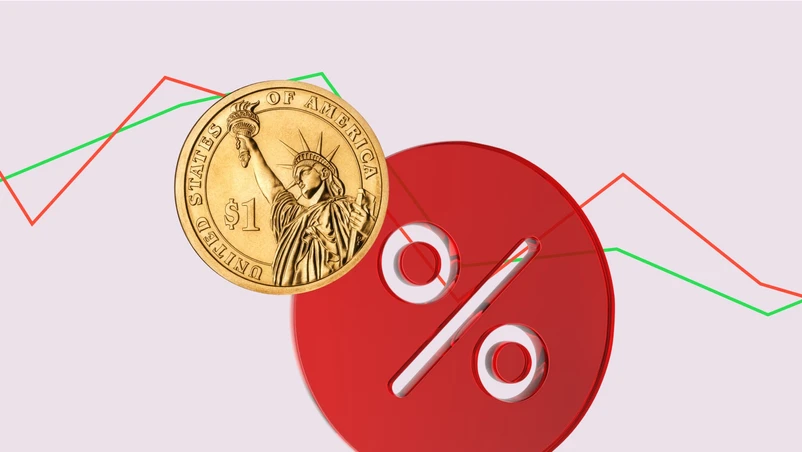US retail sales numbers place another brick in the wall blocking the way of interest rate cuts
Today's retail sales report contains no signs that the strength of US consumer demand is wilting, pushing back further the timing of a first interest rate cut to now at least Q3.

Today’s US retail sales report shows the strength of US consumption still to be strong and presenting no signs yet of any significant slowdown in the pace of economic activity. For the Fed, the report places another brick in the wall that is preventing it from cutting interest rates, coming as it does on the back of a run of stronger CPI and employment reports, as the tailwinds from the loose monetary conditions adopted during the covid pandemic continue to fan both inflation and economic activity and – as evidenced by today’s report – consumer spending.
US consumption remains strong...
On the back of today’s report, it is hard to draw any other conclusion than US consumption remains unequivocally strong. Not only did the March monthly reading print well above consensus (0.7% v 0.4%), but sizeable upward revisions were also made to the January and February numbers, reversing the suggestion of slowing consumer demand contained in last month’s report and leaving a picture of stronger underlying consumer demand than had previously been considered. In the year to March, retail sales have grown by 4.0%.
No sign of any real weakening in consumer consumption from Q4...
The main drivers behind today’s numbers were a 2.7% jump in non-store sales and a 2.1% increase in fuel sales. General merchandise sales were also strong, printing at 1.1%. Possibly this year’s early Easter holidays may have contributed to this splurge in consumer spending. But a lack of any similar increase in spending patterns from previous early Easters suggests it is more than just a holiday factor. Overall, today’s numbers suggest that consumer consumption growth in Q1 overall may be on course to record a figure of close to 3.0%, which if delivered suggests no significant slowdown from the 3.3% number recorded for Q4 and raising questions over whether the Fed has actually done enough to sustainably quell underlying inflationary pressures.
But current strength of spending still expected to fade going forward...
On a more positive note for the Fed, however, it is difficult to see how this strength in consumption can be maintained indefinitely. Although the resilience that has been seen in consumer spending to date has clearly been a main driver of US economic growth over the past year, the corrosive impact of higher prices and high interest rates is expected to cause the propensity to spend to fade going forward. Alongside this includes the marked slowdown that has been seen in post-tax real income growth over the past 12 months or so, plus the fact that the bulk of the excess savings built up over the pandemic have now been spent. Plus a number of leading indicators and surveys (such as the NFIB survey) are pointing to a softening labour market going forward which can be expected to exert continued downwards pressures on wages growth. All these factors should act to curb consumer spending going forward. The key question for the Fed is when (and if) this curb will materalise; and whether any cuts to interest rates will simply encourage consumers to ramp up spending again.
First interest rate cut not now expected until late Q3...
In the meantime, today’s report, when read in conjunction with the strong inflation and employment reports that have already been delivered this year, has probably ruled out the prospects of a June interest rate cut being delivered; at a minimum a serious dent must have been put in the chances of one being seen. And when you factor in the incredibly risk averse nature of the current Fed, we are likely facing an FOMC that will now want to see a consistent run - ie at least three consecutive months - of soft CPI and employment data before it will consider any cuts to interest rates. With the FOMC scheduled to meet in May, June and July, and then not again until September, our baseline forecast is that, even if this current run of stronger economic data reverses going forwards, a first rate cut is not now likely to be seen until September at the earliest.
Given the risk averse nature of the current Fed, the run of strong economic data delivered over Q1 has almost certainly pushed back a first interest rate cut to late-Q3 at the earliest.









